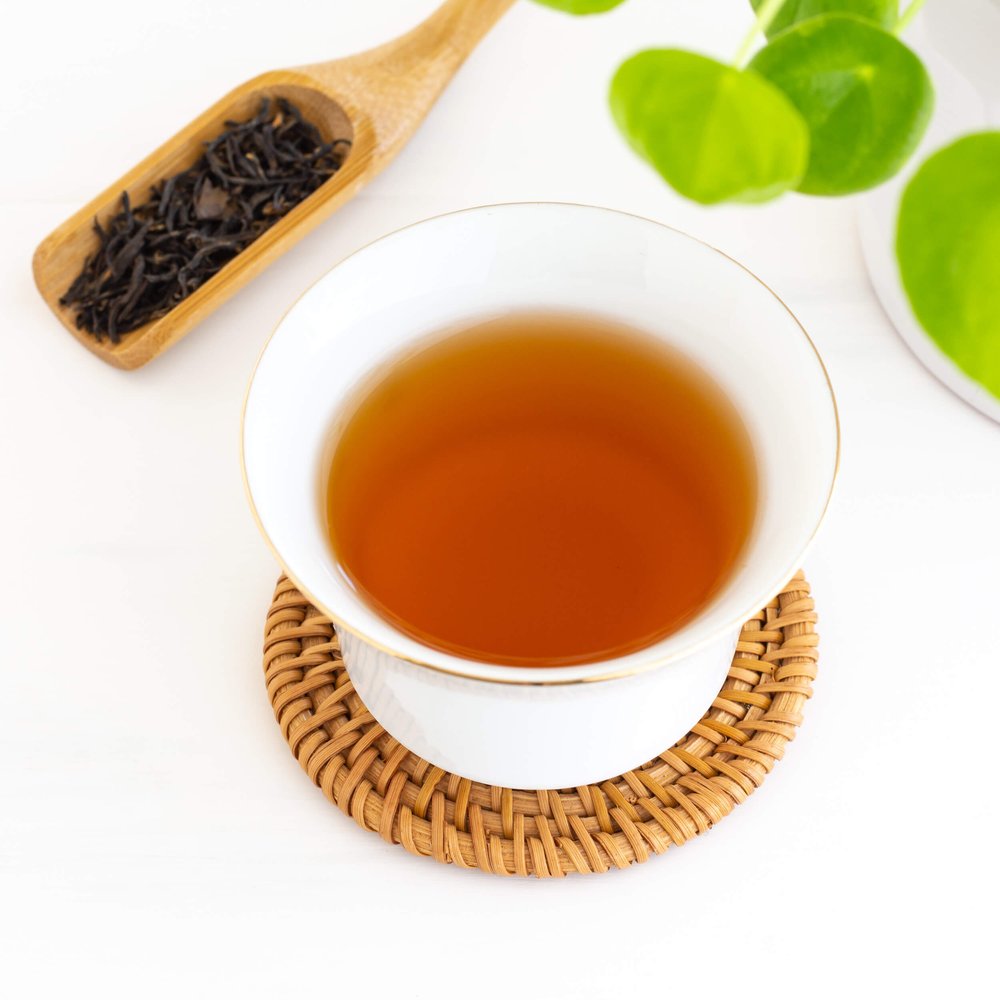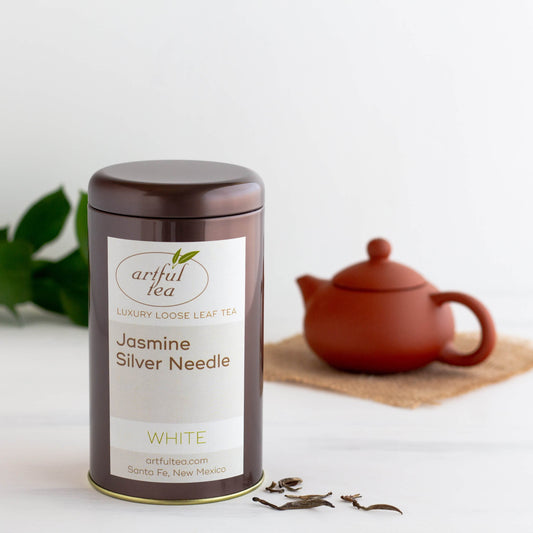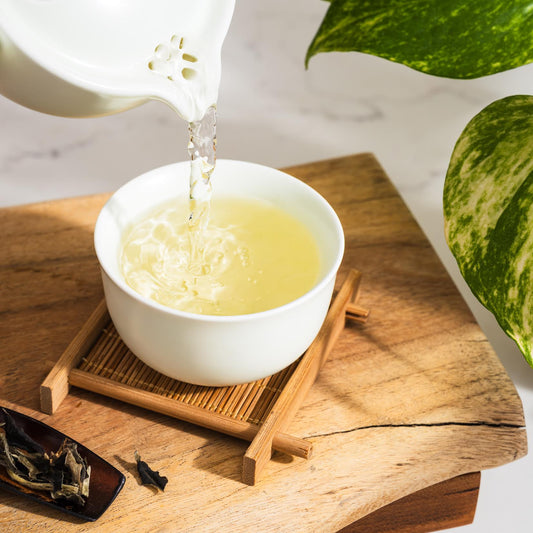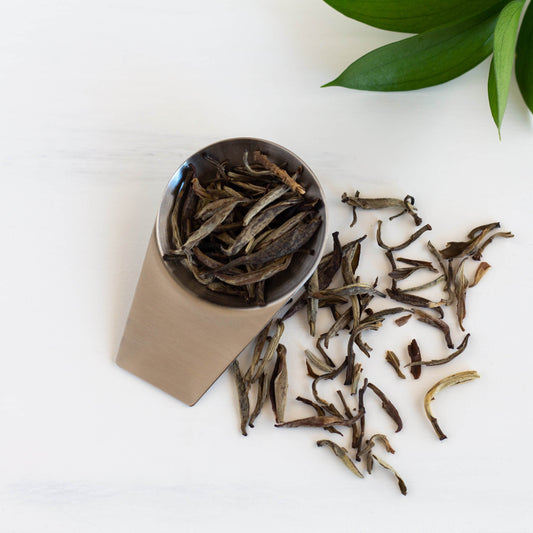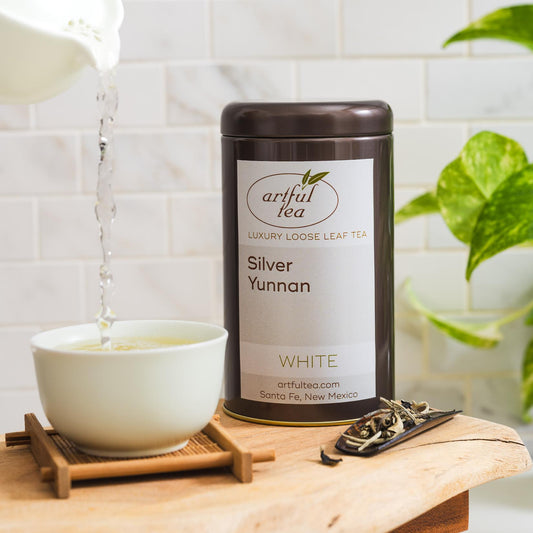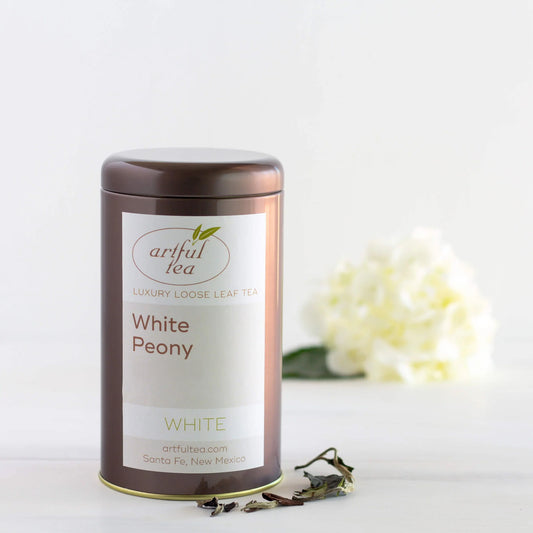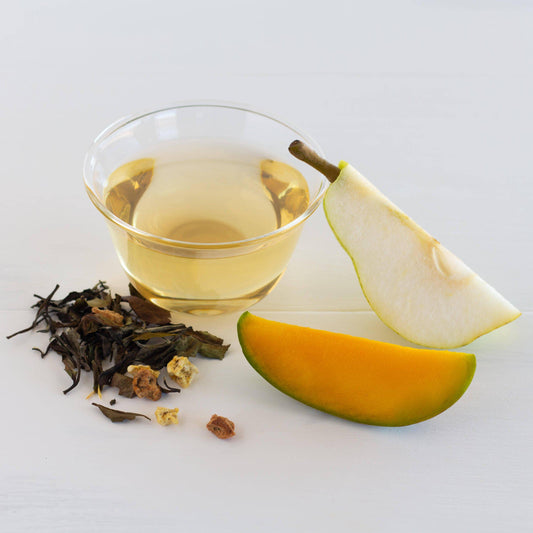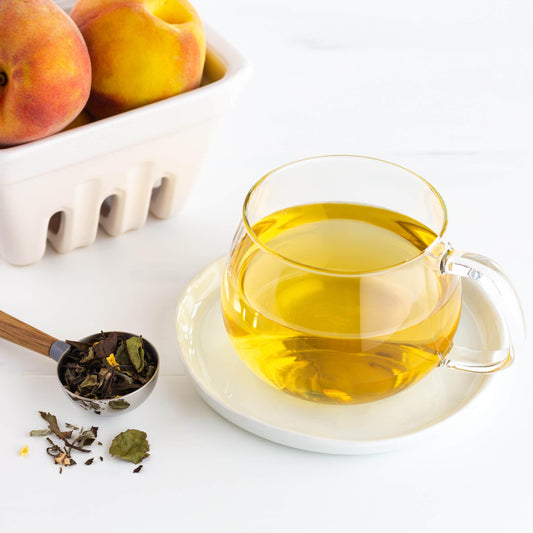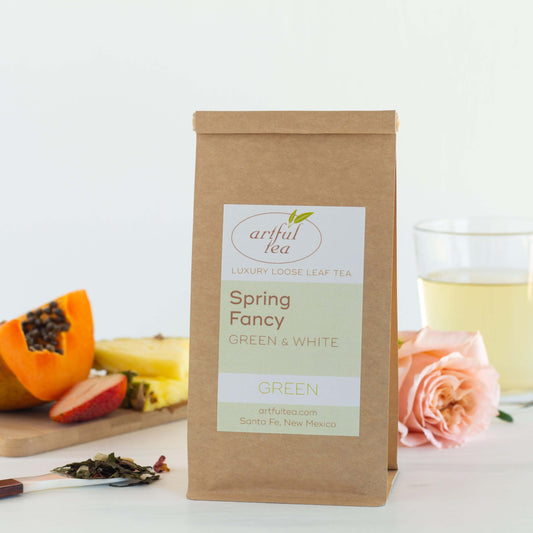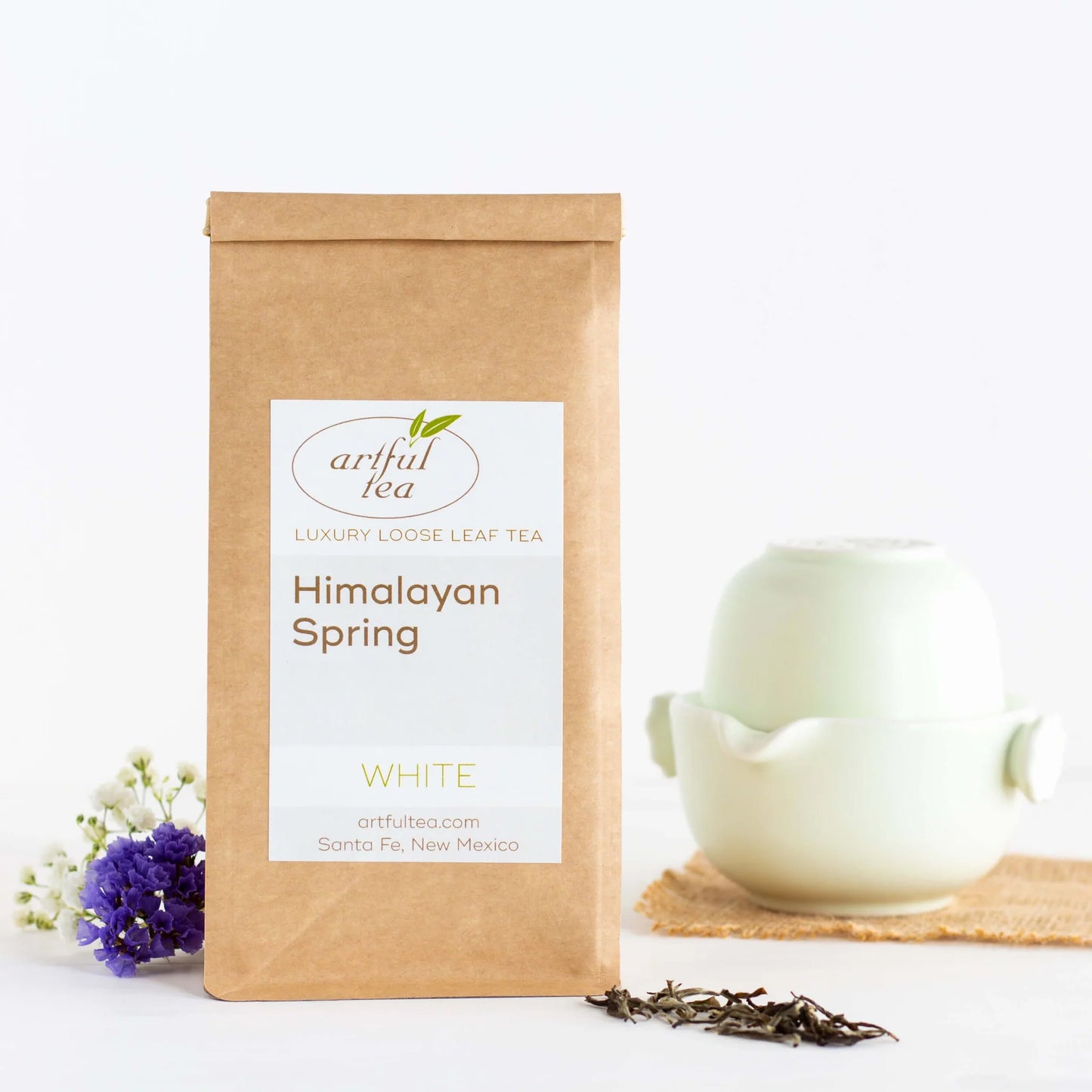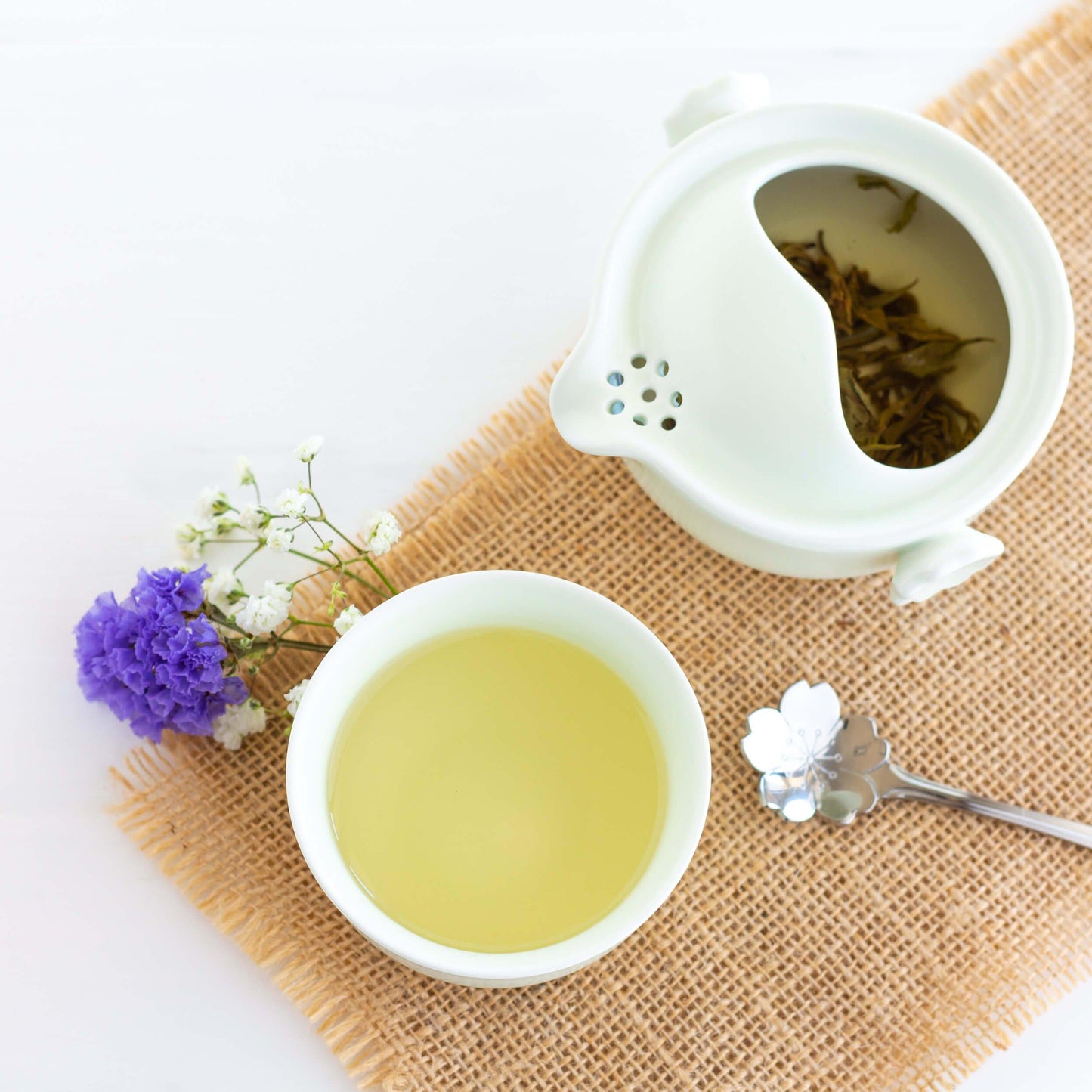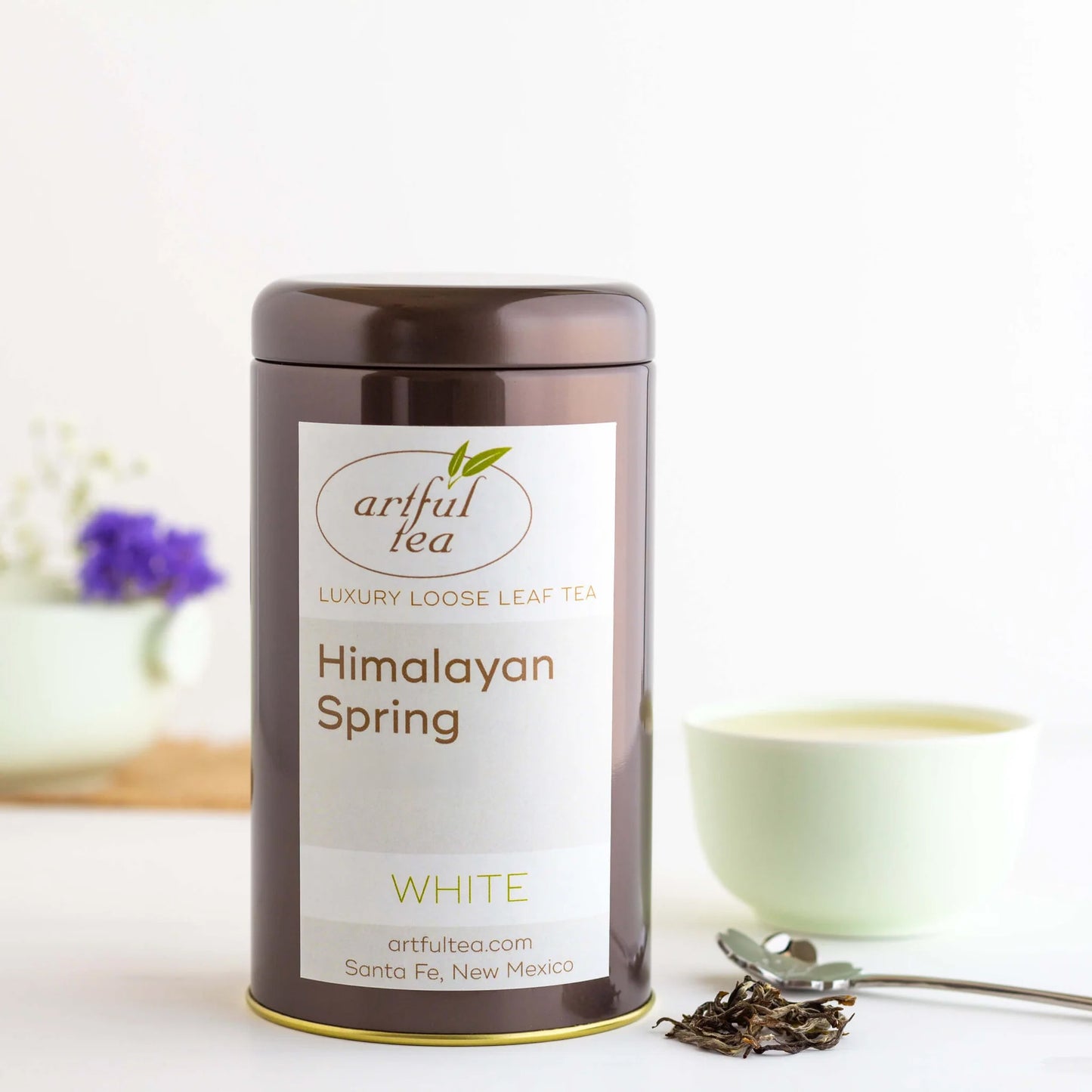While it’s possible to give estimates when it comes to the caffeine content of different teas, in reality there are often too many factors that contribute to caffeine levels in tea to provide a definite amount. When the tea leaves were harvested, how they were processed, and the specific varietals of the tea plant they come from all influence the caffeine levels of a particular tea.
In addition, how the tea is brewed, including factors like water temperature, the amount of leaves, and steeping time, all have a significant influence on how much caffeine is present in a brewed cup. The caffeine present in tea may also affect different people in different ways according to their unique sensitivities and biochemistry.
What is white tea?
While there are many different types of white tea, in general they share similar characteristics in that they undergo minimal processing and have a light, mild character. Many white teas exhibit mellow, fruity, and floral notes. Most white teas are produced in China, although some up and coming tea producing countries, such as Nepal, also export white tea.
White tea may be made from the first tips and buds of the tea plant, or from more mature leaves. When a white tea is made from the very first buds of the tea plant, these teas are often called silver tip or silver needle teas. When you look closely at these tea leaves, you can see the fine, downy silver hairs still present on the tea buds. The buds are long and thin, and may expand and unfurl slightly when brewed. These teas are usually harvested early in the spring.
White tea can also be made from mature tea leaves, or a mix of tea leaves and buds. These teas are often harvested later in the spring and summer. Teas like White Peony and Himalayan Spring are examples of white teas made from more mature leaves. These tea leaves are often immediately recognizable as dry leaves, and may be grey, green, or brown in color.
Tea and caffeine
There are a variety of different factors that contribute to the caffeine levels in tea. It can be difficult to determine the caffeine content of a particular type of tea, and often may not be possible outside of a laboratory setting. In general, black tea is assumed to have more caffeine, white and green tea are assumed to have less caffeine, and oolong falls somewhere in the middle. In reality, however, different teas can vary widely in terms of their caffeine content regardless of tea type.
When brewed, tea contains less caffeine than coffee (usually half as much or less.) However, tea leaves actually contain more caffeine than coffee in their natural state. Tea ultimately contains less caffeine when brewed than coffee because fewer tea leaves are used per ounce of water, and because tea is prepared in a much different fashion.
So what exactly contributes to the caffeine content present in a cup of tea? There are a variety of different factors, including:
- How the tea is grown - Certain growing practices, such as shading tea plants for several weeks prior to harvest, will increase the caffeine present in tea. Gyokuro, Kabusecha, and Matcha are examples of teas that have a higher caffeine level as a result of being shade-grown.
- When the tea is harvested - Teas made from young leaves harvested in the spring tend to have higher caffeine levels. Silver tip white tea is a classic example of a tea made from young leaves with a higher caffeine level.
- How the leaves are processed - Processing also influences the caffeine content of tea. Teas that are steamed to halt the oxidation process tend to contain more caffeine, while teas that are roasted contain less.
- Amount of tea leaves used - When preparing a cup of tea, the more tea leaves you use, the more caffeine will be present in the brewed tea. This is because a cup made using more tea leaves will be more concentrated.
- Water temperature - Using hotter water will result in more caffeine in a cup of tea, while using cooler water will result in less caffeine. Black teas are usually steeped in hotter water, while white and green teas are usually steeped in cooler water.
- How long the tea is steeped - A longer steep time will increase the amount of caffeine present in a cup of tea. Black teas are usually steeped for a longer time than other types of tea.
How much caffeine is in white tea?
In general, white tea has a lower caffeine content than most other types of teas when brewed. This is because white tea is often made from mature tea leaves, is prepared with cooler water, and is steeped for a shorter length of time.
However, some types of white tea, especially silver tip or silver needle tea, may contain more caffeine. This is because these teas are made from very young tea buds and tips harvested in the early spring, which naturally contain more caffeine than mature tea leaves. Since these leaves are often still prepared using a lower water temperature and shorter steep, the final cup of tea may still contain only a mild amount of caffeine.
If you’re looking to limit your caffeine intake, we suggest trying a light white tea made from mature tea leaves, such as White Peony. You can also try using fewer tea leaves, preparing tea with cooler water, and steeping tea for a shorter amount of time in order to lessen the amount of caffeine.
Everyone experiences the effects of caffeine differently, so if you’re not sure how a certain tea will affect you, you may want to experiment with a cup or two and see how you feel.
If you’re trying to steer clear of caffeine entirely, you have a few different options. Tea that is “decaffeinated” through a chemical process still contains a small amount of caffeine, so it’s usually not a good option if you’re trying to eliminate caffeine from your diet.
However, there are a variety of delicious herbal teas available, including classic herbs like peppermint, hibiscus, and rooibos, as well as many creative blends.
How to prepare white tea
When preparing white tea, we recommend using one to two heaping teaspoons of tea leaves for every six ounces of water. Heat your water until it is steaming briskly but not boiling, at about 175-180 degrees. Pour the hot water over the tea leaves and steep for two to three minutes. Then remove the leaves and enjoy!
The instructions above are just general guidelines, and can be modified to suit your preference. If you prefer a stronger cup of tea, you may want to consider using more tea leaves per cup. In general, we don’t recommend increasing the water temperature or steeping time for white tea, as this may result in a bitter, over-brewed cup.
Our white teas
Here at ArtfulTea we carry a variety of classic and flavored white teas.
Kenya Silverback White Tea
Kenya Silverback is a silver needle tea made from the first downy buds and tips of the tea plant, and has a light, mellow flavor, with a subtle sweetness and notes of honey and vanilla. This tea is sourced from the Nandi Highlands in Kenya and produced in accordance with the Ethical Tea Partnership.
White Peony White Tea
White Peony, also known as Pai Mu Dan, is a full-leaf white tea sourced from the Fujian Province of China. Consisting of both buds and leaves that are air dried after harvesting, this subtle white tea has a floral aroma and velvety taste.
Himalayan Spring White Tea
The first leaves of the spring season are hand-plucked in the foothills of Nepal to produce this refreshing white tea. Himalayan Spring brews up into a pale, peachy straw color, and embodies the characteristic lightness and brightness of a spring harvest white tea. This tea is smooth and buttery, with no hint of bitterness.
Jasmine Silver Needle White Tea
Bai Hao Silver Needle tea leaves are scented with fresh jasmine blossoms to create a delicate, aromatic tea with the tantalizing floral scent of jasmine. Jasmine Silver Needle is composed of downy, silver-tipped tea leaves of the finest quality.
Mango Pear White Tea
White Peony tea leaves combine with mango, apple, and pear for a delicate, fruity tea with tons of flavor. Mango Pear is delicious hot and also makes an excellent iced tea.
Peachy Keen White Tea
This fruity white tea is reminiscent of the heart of summer, when fresh fruit is in abundance. Delicate white tea leaves are flavored with peach, quince, orange, and tangerine. Peachy Keen is excellent hot or iced.
Spring Fancy White & Green Tea
Spring Fancy is a light, fruity tea that’s perfect for spring and great year-round. This tea blends green and white tea leaves with papaya, pineapple, rose petals, strawberry pieces, and passion fruit for a mellow, tropical tea that’s bursting with flavor. Spring Fancy is delicious hot, and also makes an exceptional iced tea!
FAQs about white tea and caffeine
Does white tea have caffeine?
Yes, white tea contains caffeine. While the exact caffeine levels vary depending on a number of factors, including the harvest time and growing practices, in general white tea tends to be low in caffeine, containing less than most other black, green and oolong teas (and much less than coffee).
Does White Peony tea have caffeine?
Yes, White Peony contains caffeine. However, White Peony is lower in caffeine than most other teas, even when compared to other white teas. This is because White Peony is produced from mature tea leaves that are harvested and air-dried with minimal processing. Unlike white teas produced from the very first downy tips and buds of the tea plant, teas produced from mature leaves tend to be lower in caffeine.
Does Chinese white tea have caffeine?
Yes, Chinese white tea has caffeine. While some specialty white teas are produced in countries like Kenya and Nepal, a great number of white teas originate from China. These include classic Chinese teas like White Peony and Jasmine Silver Needle.
Does white tea have less caffeine than green tea?
In general, white tea is lower in caffeine than green tea. However, because so many different factors affect the caffeine content of a brewed cup of tea, this is a general guideline rather than a hard and fast rule.
Does white tea have more caffeine than black tea?
In most cases, white tea is much lower in caffeine than black tea. Black teas typically contain about half as much caffeine as a cup of coffee, while white teas may contain half that or even less. One reason why black tea tends to be much higher in caffeine is because it is usually brewed using boiling water and infused for a longer period of time, both of which elevate the caffeine content in tea.
